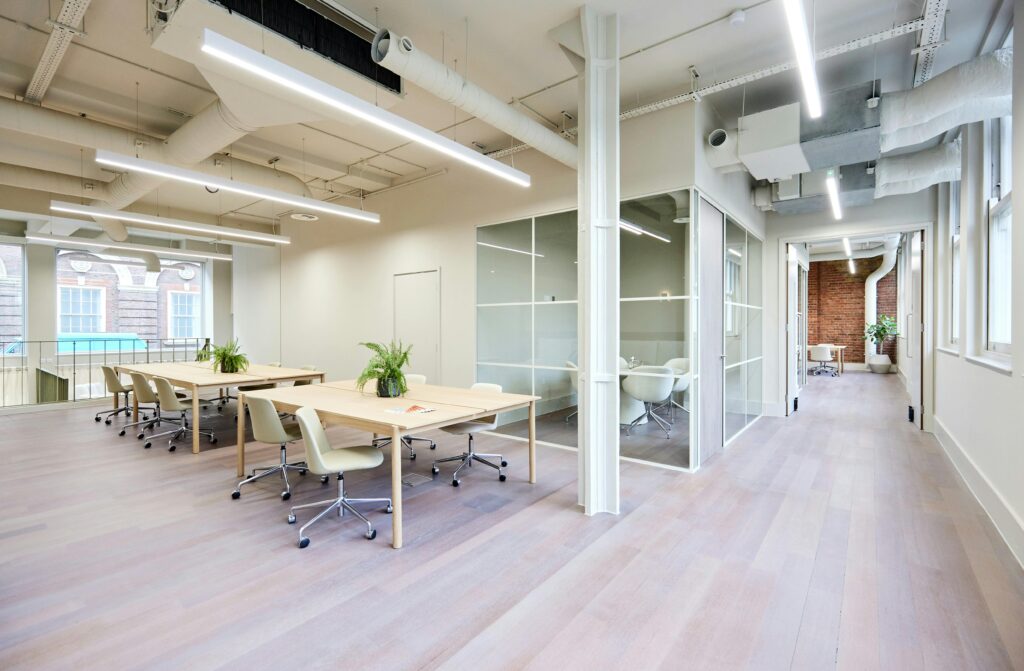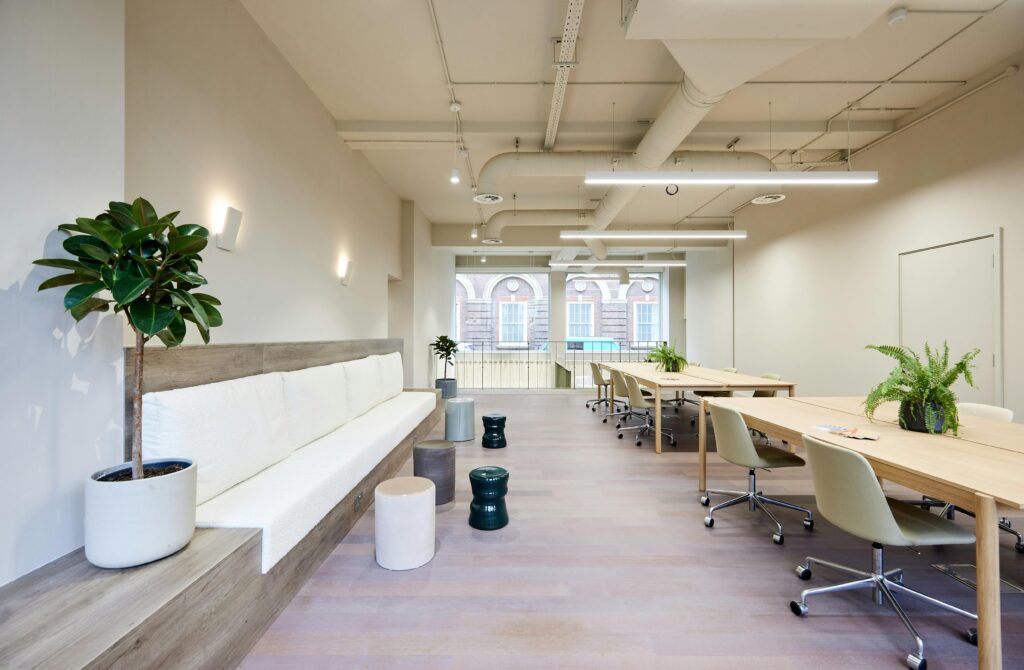The choice between co-working spaces and traditional office rentals in London involves more than just comparing monthly costs. Understanding the true financial implications requires examining all associated expenses, flexibility benefits, and long-term commitments that each option entails.
What are the typical monthly costs for co-working spaces versus traditional offices?
Co-working dedicated desks cost £175-248 monthly whilst traditional offices average £400-600 per desk monthly. Traditional office rentals convert to approximately £400-600 per desk monthly when calculated at standard densities.
The stark difference becomes clearer when examining annual costs. A dedicated co-working desk costs roughly £2,976 annually, whilst a traditional office space averages £5,000-7,200 per desk per year before additional expenses.
What hidden costs come with office rentals compared to co-working spaces?
Traditional offices require deposits of 6-12 months rent, legal fees of £2,000-5,000, and fit-out costs exceeding £20,000, whilst co-working spaces include all these costs. These hidden costs can substantially impact your budget planning and cash flow.
| Cost Category | Traditional Office | Co-working Space |
|---|---|---|
| Deposit | 6-12 months rent | Usually none |
| Legal fees | £2,000-5,000 | Included |
| Fit-out costs | £20,000-50,000+ | Included |
| Utilities | £50-100/month per desk | Included |
| Internet/Phone | £100-300/month | Included |
| Cleaning | £200-500/month | Included |
| Security | £300-800/month | Included |
| Maintenance | £1,000-3,000/year | Included |
How do lease terms affect co-working space versus office rental costs?
Traditional offices require 3-5 year commitments with personal guarantees, whilst co-working offers monthly flexibility. This flexibility premium can be worth the extra cost for growing businesses or those testing new markets.
Break clauses in traditional leases often require 6-12 months notice and penalty payments. Co-working spaces eliminate these risks entirely, allowing businesses to scale up or down with minimal financial exposure.
Which option provides better value for different business sizes?
Solo entrepreneurs and teams of 1-3 people benefit from co-working, whilst teams of 10+ employees typically save money with traditional offices. The UK co-working market has grown to £1.44 billion in 2025, reflecting increased adoption among smaller businesses.
Teams of 10+ employees often benefit from traditional office rentals, particularly when factoring in the cost per desk and the ability to customise the space. The break-even point typically occurs around 8-12 employees, depending on location and requirements.
What extra benefits do co-working spaces offer over traditional offices?
Co-working spaces include networking opportunities, meeting rooms, and professional events that traditional offices require separate budgets for. These soft benefits can translate to business development worth thousands annually.
Traditional offices offer complete privacy, brand control, and the ability to create specific company culture. For client-facing businesses, having a dedicated address and customised environment often justifies the additional expense.
Do co-working spaces cost less than offices in central London?
Premium London locations show co-working costs 60-70% less than traditional offices, whilst emerging areas have minimal price differences. In areas like Shoreditch, co-working spaces may cost 60-70% less than equivalent traditional office space.
Emerging areas often have minimal price differences, making traditional offices more attractive for established businesses. Areas like Stratford and Croydon offer competitive traditional office rates that narrow the co-working advantage.
Should startups choose co-working spaces or traditional offices?
Startups benefit from co-working flexibility whilst established businesses with stable headcounts achieve better value through traditional rentals. The ability to test locations and scale quickly often outweighs the per-desk premium.
Established businesses with stable headcounts typically achieve better value through traditional rentals, particularly when factoring in the prestige and customisation benefits that support client relationships and employee retention.
The decision ultimately depends on balancing immediate cost savings against long-term business goals, growth projections, and the value placed on flexibility versus stability.

